To Comb or Not To Comb
Choices in Fiber Preparation
Hello dear readers and welcome to the new subscribers! The flock and I are happy to have you join us!
You have chosen your fleece and have decided if you want to scour it or spin it raw, so what happens next?
If you have not chosen a fleece, here are some guidelines to help you pick the one for you! How To Pick A Good Fleece
Do you want a woolen yarn or a worsted yarn? This is where your fiber preparation comes in.
Woolen yarns are fluffier, as they trap air in them, they are warmer and softer overall. You will have less defined stitches in your project. They are great choices for winter hats or mittens.
When you look at the direction of the fibers for woolen, they are going all over the place, much like how my hair looks when I get up in the morning.
To achieve a woolen prep, you would hand card your wool and make rologs to spin from.
Worsted is a tighter, more compact, sleek yarn. It is the yarn for well defined stitches in your project, such as lace.
The direction of the fibers in a worsted preparation are lined up parallel to each other.
Worsted comes from wool that has been combed to line the fibers up and you spin from roving.
Wool combs and hand cards are both readily available to purchase online. You will have to decide what are the best sizes for the wool you have chosen. They do come in different sizes for your different wool types.
Hand cards are sized by “teeth per inch” or TPI. Teeth are the individual wires that are standing up on the cards. You want more teeth for finer fibers. Less teeth for medium or coarser wool. Cards come in a pair that you use against each other.
The sizes you will find are 54 tpi for coarse, 72 tpi for medium, 90 tpi for fine wool, and 120 tpi for superfine wool.
I have a 72 and a 90 set, and I do prefer the curved back cards, as they let me have a more natural to me movement when carding. I like the feel of rolling when I’m using them.
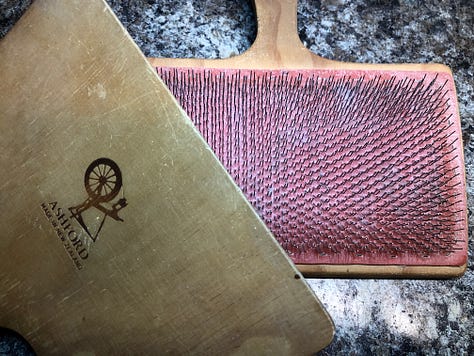
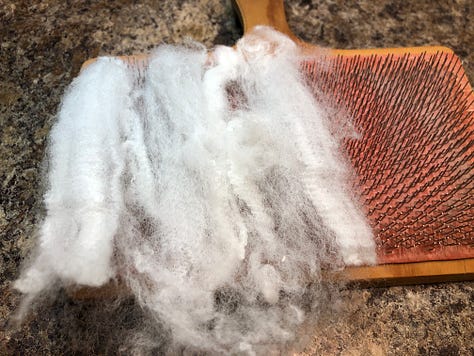
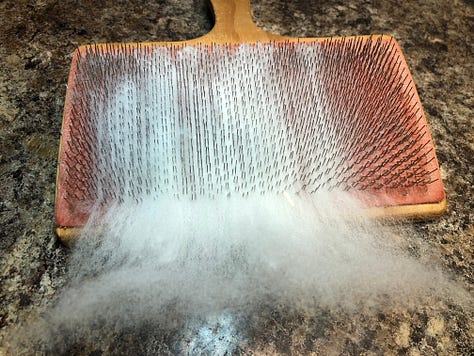
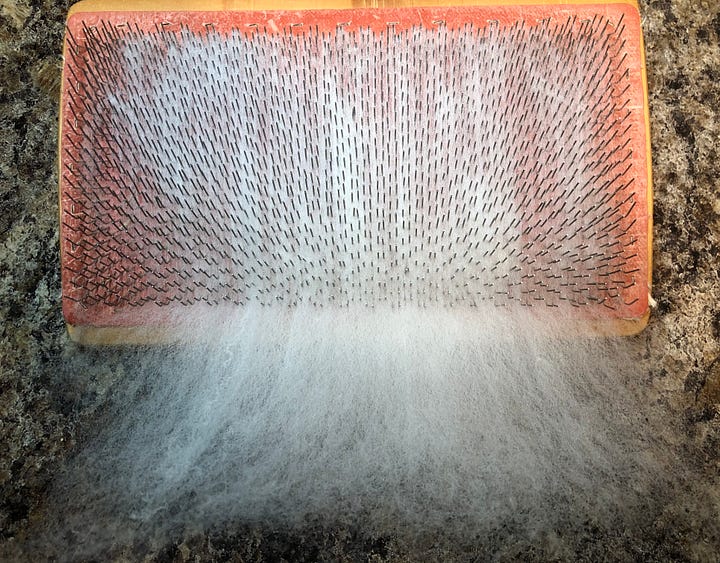
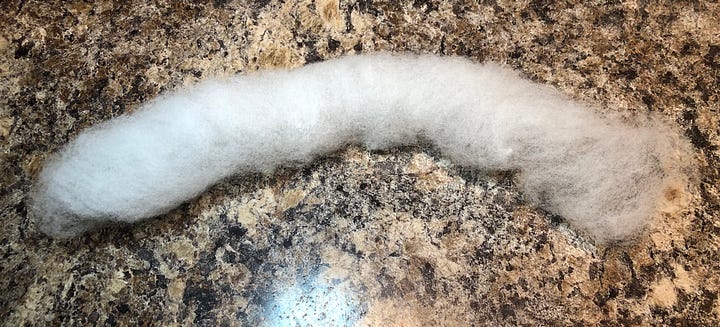
Combs also come in different sizes depending on what your wool is.
****A word of warning on using wool combs. You might want to be up to date on your tetanus shot! I guarantee you will stab yourself with them and they are wickedly sharp!!!****
Combs have a wider variety also. Combs come in a pair as well.
Viking combs are hand held combs with 1-2 rows of teeth. They come in multiple sizes for fine to coarse, and the largest are generally for the long wool breeds.
English combs work where one is stationary and one is the working comb. They come from 1-5 rows (called pitch) of teeth. These combs are more versatile as they can accommodate a wider variety of wools from fine to coarse and short to long lengths.
I have one set of English and one set of Viking. For me, it depends on where I am and how much I feel like combing. If I want to make a lot of roving at one time I use the English. If I’m doing a public demonstration or am in an area where I don’t have much space, I use the Viking combs.
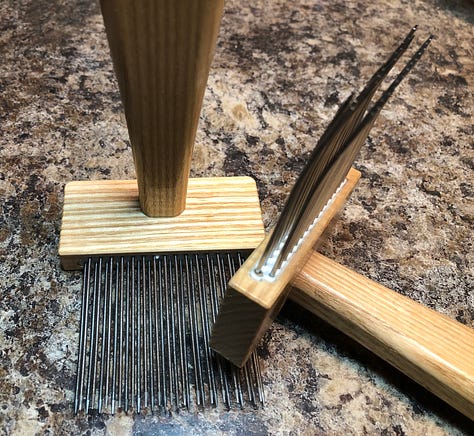
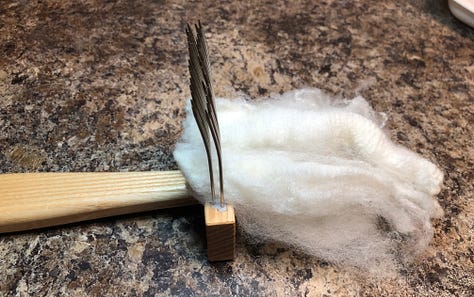
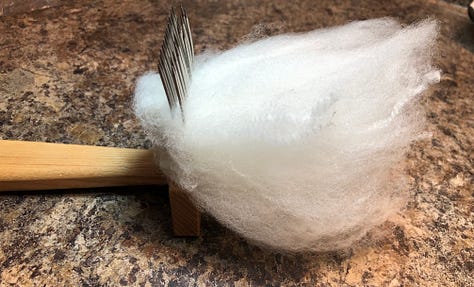
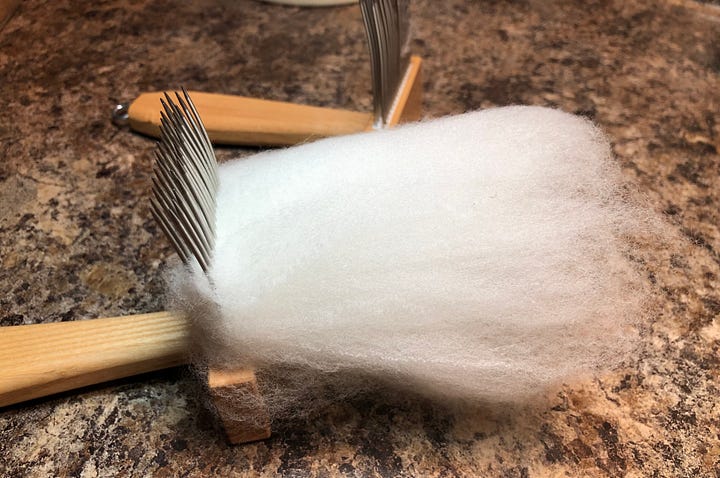
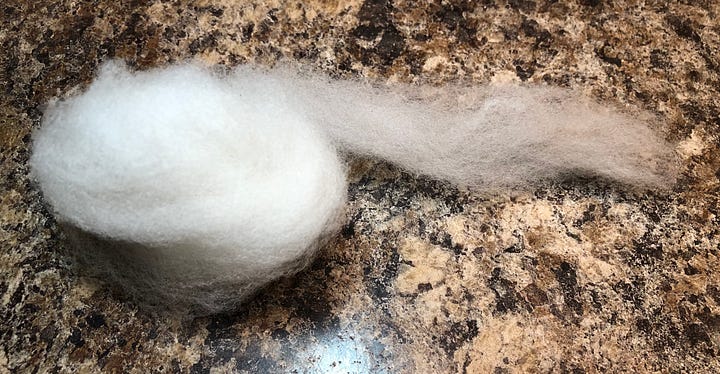
The process for both cards and combs is to move the fiber from the loaded one to the empty one, then back again. Sometimes you need more than 2 passes to get the fiber open, fluffy and looking how you like.
A word on neps and VM. Well, probably more than a word on this subject.
When I sell a fleece, I do advise that you comb the fibers from my sheep. They are so fine that hand cards can create what are called neps in the fiber. Neps are little balls of fiber, and they can create small lumps in your spun yarns. Combing does not create those little balls. Now, if you want those little lumps, and some folks do, then by all means card the fine fibers.
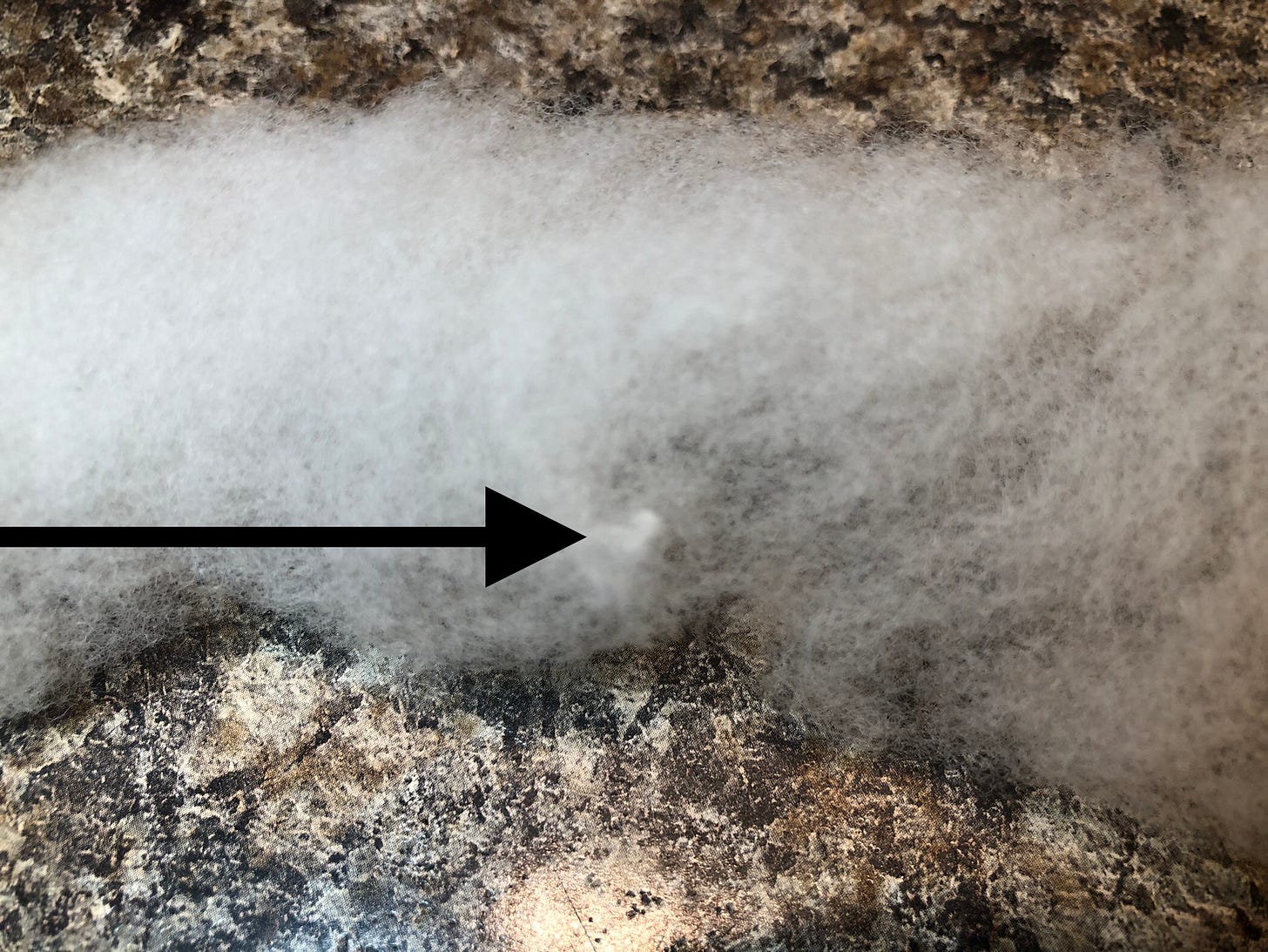
VM or vegetative matter, the stuff that gets into the fleece by the simple act of sheep living outside. Carding will drive VM into your rolog that will be difficult to get out later. You can pick some of it out as you spin, but it can be a pain in the backside to get it all out. I would not card fiber that has a lot of VM in it to start with.
Combing does a better job of getting the VM out of the fiber. It opens the fibers up and let’s it, basically, fall out as you comb.
Putting aside the woolen vs worsted decision, I prefer to comb any wool that I come across. I like how it looks, I like how it spins, and I like how my yarn comes out.
If you have a fiber guild or group near to you, you should be able to try out both of these fiber preps before you make an investment in tools. Most guilds/groups will let you try out equipment that they have on hand. Some even have a tool library you can indulge in. Plus they can teach you the correct way to use them.
I hope you have fun on your fiber adventures!!! Next step…Spinning!
Blessed Be!
Thank you to all of my readers who show support for my work with a like, a comment, a share, or by being a paid subscriber. I am blessed by you.
Please consider showing your support by sharing my stack or becoming a paid subscriber! I am grateful for your love!


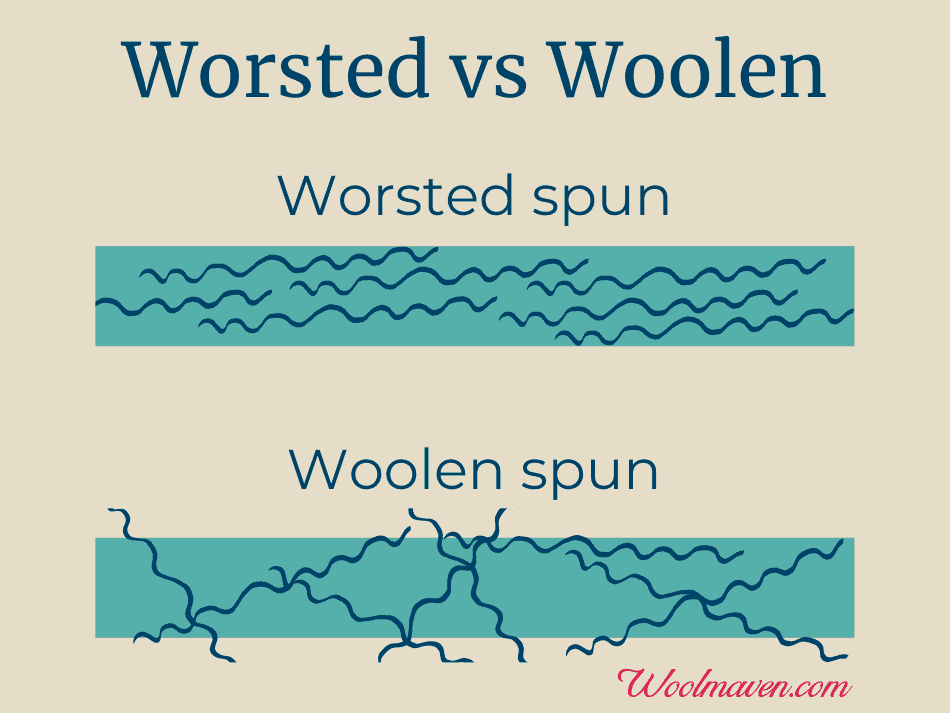

I am just about comfortable spinning worsted on my spindle. Woolen preparation and long draw still remains a mystery. Hopefully some day I 'll get there. Great pictures and explanation in your article.
What a fabulous resource!! So interesting to learn about this. Thank you for your guidance, skill and knowledge :)